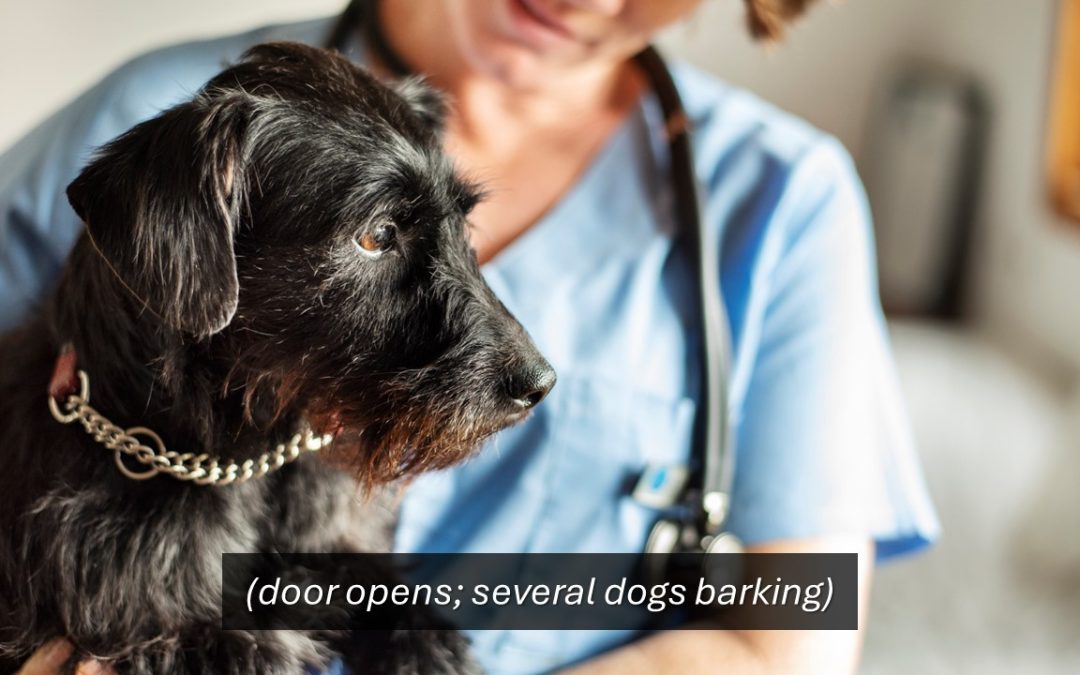Subtitles used to be reserved for foreign films, helping us understand French detectives or keep up with fast-talking British dramas. But today, according to The Guardian, most of Gen Z watches television with subtitles on . . . even when everyone’s speaking perfect English.
At first glance, it feels like a generational quirk. But this small shift in how we consume content says something much bigger about how we learn, communicate, and connect—and yes, that includes in Veterinary medicine.
The rise of the subtitle generation isn’t just a tech trend—it’s a cultural signal. It tells us that clarity, accessibility, and flexibility have officially become the cornerstones of communication.
For Veterinary professionals, that means reimagining how we teach our teams and our clients. Education is no longer a one-way conversation; it’s a multi-layered ecosystem of visuals, text, sound, and experience.
In this two-part series, we’ll first look at what this means for education inside Veterinary practices—and next month, in Part Two, we’ll explore how this same shift is reshaping continuing education (CE), symposiums, and webinars.
A Subtitled World — and What It Tells Us
According to The Guardian, subtitles aren’t just an accessibility aid anymore—they’ve become a default feature of modern life. People are multitasking, scrolling, streaming, and “sort of” paying attention, and captions keep them connected even when their brain is juggling twelve tabs.
In short: we’re no longer just listening. We’re reading and watching at the same time.
This shift is quietly rewriting the rules of education. Veterinary teams, clients, and even CE participants are no longer single-stream learners. They want information that’s bite-sized, captioned, replayable, and interactive—the Netflix of knowledge, if you will.
Learning in Layers
In the not-so-distant past, Veterinary education leaned heavily on lectures, printed handouts, or quick hallway conversations. But the subtitle mindset tells us that the future belongs to layered learning—where text, visuals, and sound work together to help people absorb information in the way that works best for them.
Picture this: you’re explaining post-surgical care to a client. Instead of handing them a two-page instruction sheet that ends up in the car cupholder, you send them a short video showing how to monitor a wound—complete with clear captions and pop-up definitions for words like “subcutaneous.” They can re-watch it later at home, coffee in hand, and actually remember what to do.
That’s what subtitles have taught us: comprehension skyrockets when information lives in multiple forms.
Inside the Practice: Education That Actually Sticks
Let’s be honest—long policy binders and marathon orientations rarely win awards for engagement. By contrast, captioned micro-videos and interactive transcripts are the training tools Veterinary teams didn’t know they needed.
A few quick examples:
- Onboarding videos with captions let new hires follow along even when a barking chorus breaks out in treatment.
- Visual cues and text reinforcement make safety protocols easier to grasp—and remember.
- Interactive transcripts from lunch-and-learns help staff revisit key sections later, without hunting through hour-long recordings.
This kind of learning isn’t just more effective—it’s more inclusive. A technician who missed part of a demo can easily catch up later. A team member whose first language isn’t English can read along at their own pace. Everyone stays in the loop, and the result is better communication, stronger retention, and fewer “Wait, what did that memo say again?” moments.
For Clients: Clarity Is the New Currency
If the subtitle trend teaches us anything, it’s that clients crave clarity over conversation length. Sure, they want to talk about their pets (and we love that too), but they’ll also happily watch a one-minute, captioned video about dental care or heartworm prevention—especially if they can replay it later.
By offering short, captioned explainer videos or follow-up micro-lessons, clinics can:
- Reinforce in-clinic discussions
- Reduce miscommunication and follow-up calls
- Boost compliance with medications or diets
- Deliver a polished, modern client experience
Of course, accuracy matters. Auto-captioning and medical jargon are not friends—no one wants “Give two milliliters” misread as “give too many liters.” So captions should always be checked and edited. But when done well, this approach bridges the gap between information and understanding—the ultimate goal for every Veterinary team.
The Bigger Picture: Attention Is Divided—and That’s Okay
Let’s face it—no one gives their undivided attention anymore. Between texts, TikTok, and tail wags, we’re all multitasking. Instead of fighting it, education should adapt to it.
Learning today needs to be multi-modal, interactive, and replayable. Think:
- Short captioned videos
- Infographics with narration
- Podcasts paired with quick summaries
- Webinars that create searchable transcripts afterward
If we can train our teams and clients in ways that work with their habits, not against them, we’re setting up everyone—and every pet—for success.
Looking Ahead
The rise of the subtitled generation is about more than on-screen text. It’s about communication that’s clear, inclusive, and built for real life—the kind that meets people where they are (even if that’s on their phone in a noisy waiting room).
Veterinary education, both in practice and beyond, has a chance to evolve into something more dynamic and lasting. Next month, in Part Two, we’ll explore how this same shift is transforming CE—from symposiums to webinars—and what it means for how we connect, share, and learn at conferences.
Because if subtitles can change how we watch Ted Lasso, they can absolutely change how we learn in Veterinary medicine.

